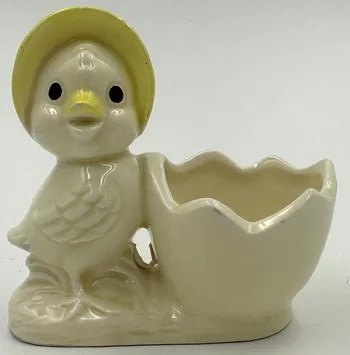Collecting Vintage & Antique Cruet Sets
Cruet sets have varied in size and shape over the last three centuries and the care and craftsmanship lavished on them have made some of the better examples very collectable.
No stylish Victorian or Edwardian dinner table would be without its cruet set.
Nowadays, we tend to think of a cruet simply as a salt and a pepper pot, with perhaps a matching one for mustard, but in times past it was something far more elaborate.
Advertisement:
There was usually a separate stand, complete with carrying handle and plain or decorated feet, and the standard number of bottles was four, though sometimes there were more and occasionally less.
The word ‘cruet’ is Dutch and means ‘crock’. Originally, it signified a small, earthenware bottle used to hold oil or vinegar for salad dressing.
Though the word comes from the Low Countries, cruets probably originated in France, because dressing salads was a French custom.
They made their way across the Channel to England in the 17th century, though only the most well-heeled British households boasted a cruet set in those days.
The more usual custom was to have a pewter pepper pot accompanying a separate salt dish and spoon.
Search eBay for Early Cruet sets here
18th & 19th century cruet sets
Cruet sets became larger and more complex in the 18th century. Silver and cut glass were used extensively, while fused plate and rolled silver became popular after 1770.
Some containers, known as casters, had perforated lids to sprinkle dry condiments such as salt, pepper and sugar.
Stoppered bottles held oil, vinegar or hot pepper sauce, while mustard was kept in a lidded pot.
A variety of condiments, including ketchup, chutney and lemon juice, found their way to the table, all identified by silver tickets around the necks of the bottles.

Cruet sets tended to get smaller overall in the 19th century, although some Victorian frames still held as many as ten containers. These extravaganzas were known as breakfast sets.
Edwardian taste ran only to three- or four-piece cruets. Any more was generally considered vulgar ostentation.
The materials used to make Victorian and Edwardian cruets varied a great deal. Mass-produced moulded and pressed glass was widely used, while porcelain and pottery sets also made an appearance towards the end of the century, and became very popular in Edwardian times.
Few dinner services were made without matching cruets.
Novelty shapes became popular; Carlton, for instance, made them in the shape of flowers and vegetables, while Grimwades produced cruets in cottage ware. Cruets also began to be collected as souvenir items.
Whether bumble or elaborate, cruet sets have long held a place at the centre of the dining table; indeed cruets were often left on show as an ornamental focus even after the table had been cleared.


Cruet sets collector’s notes
Eighteenth century cruets are fairly hard to come by, and this is reflected in high prices. Victorian silver plate is much easier on the pocket, and examples with fine cut glass make very satisfying collectables.
Pressed glass ones are much cheaper, while pottery cruets from the turn of the century are cheaper still.
Sets may be picked up in all sorts of places. Antiques markets, fairs and shops are good sources, while country house sales may well yield very desirable sets.
Auction rooms and flea markets may also produce good finds.
The key is to decide what sort of cruet you are going to collect glass and silver, silver, silver plate, pottery and novelty sets will each make a good focus for a collection – and to keep your eyes open.
Condition and completeness are the most important considerations in collecting fine cruets. The stand should be undamaged and the feet in good condition, not cracked or broken.
The bottles, casters and other containers should all fit the stand snugly, without forcing or wobbling.
The bottles in a set must be of uniform height excepting the mustard pot, which is usually smaller; any variation suggests a marriage of two or more incomplete sets.
If there is a mustard pot, it should be complete with a matching spoon. Cruet sets didn’t include egg cups.
Glass sets should always be unchipped and their original, matching stoppers should be in place. When a cruet has silver mounts, check the hallmarks to make sure they are all from the same set.
Genuine silver pieces will be hallmarked on the stand, handle and each one of the mounts.
Many popular silver patterns were reproduced in silver plate, so it’s worth checking to see if inferior items have replaced original pieces.
Less grand than their Victorian and Edwardian counterparts, more recent cruet sets may he worth collecting now with an eye to the future – particularly if you make a collection that is thematic.
1950s designs, for example, often display the clean simple lines and use of bright colour that is so characteristic of the period as a whole.
A huge variety of novelty cruets can also be found in junk shops, and designs may represent as varied a range of subjects as animals, certain fruits and cartoon characters.
Advertisement:
More Kitchen Collectibles
Are Salt and Pepper Shakers collectible What to look for
Collecting and Caring for Apothecary Bottles
V&A acquires rare Wedgwood tea & coffee set from Karl Lagerfeld estate




